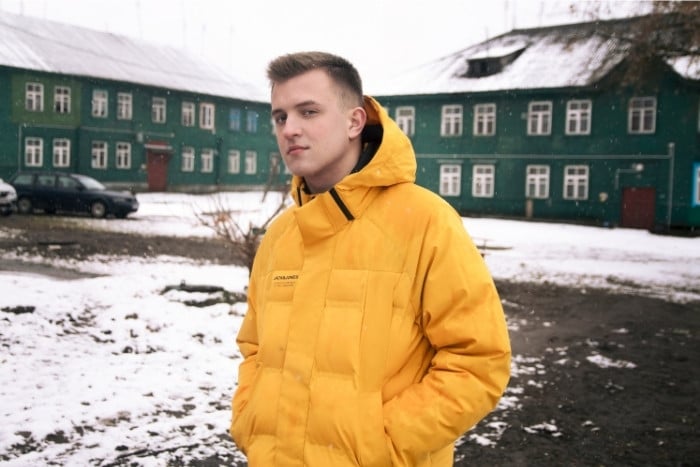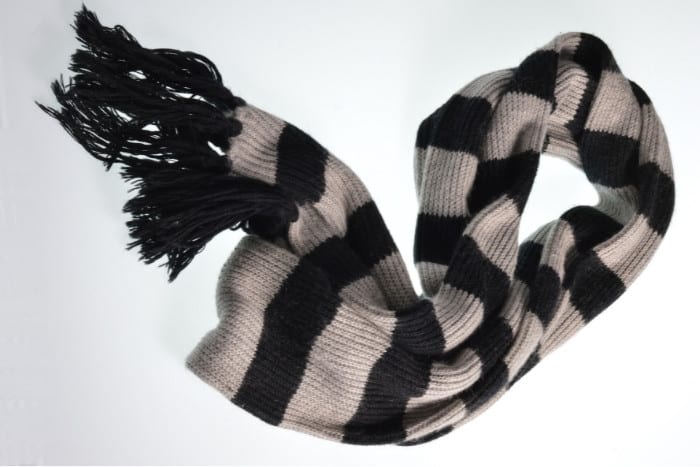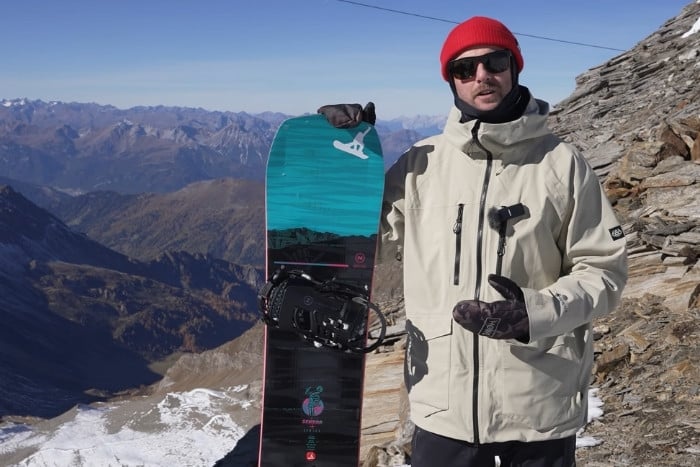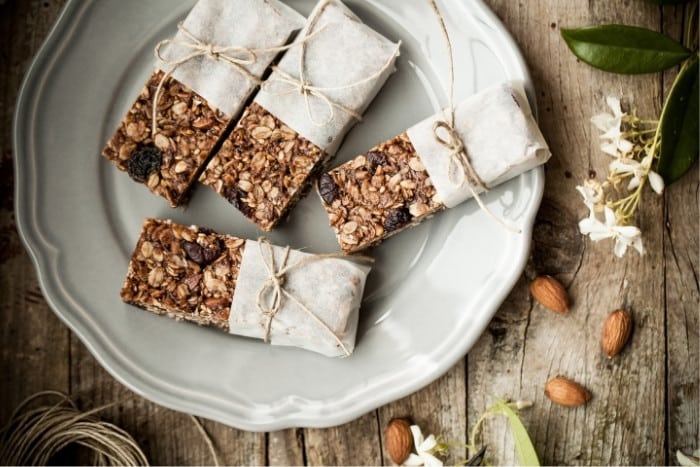Packing for a sport you’ve not undertaken before can be a stressful affair, especially if that sport takes place in extreme conditions and is riskier than many others. Truthfully, the list of items that a beginner snowboarder needs isn’t wildly different from what a pro would take; rather, the items themselves differ in a way that makes learning easier. You’ll also want to strike a balance between safe and effective equipment that won’t be a huge early investment.
A beginner snowboarder should bring warm and water-resistant clothing with them, as well as suitable protective equipment. They’ll also need to buy or rent snowboarding gear that matches their level of experience and a few extra items that will keep them safe and comfortable on the mountain.
Below, I’ve compiled a comprehensive list of gear that every beginner should have with them out on the mountain when they’re learning to snowboard, as well as what to look out for when buying or renting their kit.
What To Bring As A Beginner Snowboarder
1. Clothing
First is the clothing you’ll need to take with you on your first trip.
Fortunately, snowboard clothing has come a long way since the sport’s inception, with plenty of well-known brands making gear for the slopes.
However, remember that if there’s ever a time you should prioritize function over fashion, this is it.
a. Snow Jacket
A water-resistant snow jacket will be your primary barrier against the elements while you’re out on the slopes, providing essential protection against the cold, snow, and wind.
There are a few different types of jackets to choose from; whichever you choose is generally down to the wearer’s preference.
Insulated jackets with a thermal lining are ideal for colder climates, although shell jackets are lighter and more versatile.
However, if you opt for a technical or soft-shell ski jacket and the temperatures drop, you’ll need to remember to pack extra base layers.
A decent ski jacket may cost around $200, but as someone who once spent $50 on a new jacket and was duct-taping up the rips and tears by the end of the week, it’s definitely a case of “buy cheap, buy twice.”
On the flip side, my $200 jacket lasted two whole winter seasons of daily riding and is still going strong.

b. Snow Pants
A good pair of snow pants, or salopettes, are just as crucial as your ski jacket, as they’re also going to protect you from getting cold and wet.
Old-school-style ski pants tend to come with over-the-shoulder straps to keep them from falling down when you’re riding, and some people prefer this style, but most modern ski pants come with simple belt loops.
Your snow pants should be loose enough around the legs to give you a full range of movement but not so baggy they become a distraction.
Personally, I always go for pants with a good number of cargo-style pockets with a zip for easy access to things like my lift pass.
c. Base and Mid-Layers
While a solid ski jacket will keep out the wind and water, most of your warmth will come from your base and mid-layers.
One of the tricky parts about dressing for snowboarding is that it’s easy to go from feeling chilly when standing around in lift lines or on the gondola to roasting hot when you’ve been working hard on the slopes.
Multiple layers are the way to go because you can add or remove them as necessary.
For base layers on your legs and upper body, merino wool or bamboo are superb because they wick away moisture, retain body heat, and have natural antibacterial properties.
For an upper-body mid-layer, I usually wear a lightweight, woolen zip-up fleece that I can open up a bit if I need to cool down.
d. Socks
Many a riding day has been ruined due to uncomfortable feet, and choosing the right socks can be just as important as having the right boots.
First up, avoid cotton like the plague; it won’t wick away sweat, so your feet will get cold and possibly blister. Instead, opt for merino wool or a polyester hybrid.
When starting out, it can be a good idea to pick socks that offer extra cushioning around the shin for added comfort.
e. Gloves
When it comes to keeping your hands warm and dry, you have two options: gloves or mittens.
Mittens are generally considered the warmer of the two options as your fingers are snuggled up next to each other, but they don’t provide the same dexterity as gloves.
The extra movement offered by gloves makes it easier for a beginner to strap in and out of your board and use ski lifts (especially the beginner’s arch-nemesis, the drag-lift/ T-bar).
If you’re worried about your hands getting cold, you can pack a pair of thin glove liners in case the temperature drops.
f. Buff or Neck Warmer
While a scarf will keep your neck warm on the slopes, it’s a bit lacking in warmth-to-weight ratio and can get wet quickly, especially after a few tumbles.
However, a merino or polyester buff or neck warmer is super lightweight and versatile.
Not only will it wick away sweat and dry quickly, but it also offers UV protection and can be easily pulled over your face for extra shielding from the elements.

g. Warm Hat
Lastly, you’ll want to pack a warm beanie-style hat to keep your head warm. We’ll explain why shortly, but your hat isn’t for wearing while you’re riding, so pick whatever you like as long as it keeps you toasty
2. Protection
Next up is the gear you’ll need to keep yourself safe on the mountain.
There’s a reason snowboarding is viewed as an extreme sport. It can be just as easy to injure yourself on a nursery slope as it is in the backcountry or the park without suitable protective equipment.
a. Helmet
Nobody should hit the slopes without a helmet, whether you’re a complete beginner or a total pro. While it might be tempting to rock your fancy new beanie, keep it for breaks between riding.
When picking a helmet, look out for the safety certification (ASTM F2040 for the US, CE EN1077 for Europe) to ensure it’s up to the correct standards.
The most crucial aspect of any snowboard helmet is the fit.
Your helmet shouldn’t be too tight, but it also shouldn’t be loose enough to rock back and forth, as it won’t provide enough protection if you take a knock.
While a rental helmet will do in a pinch, buying your own is recommended, as there’s no way of knowing whether the protective inner foam is still effective if a previous user has had a big knock.
b. Impact Shorts
As a beginner, you’re going to fall on your butt. A lot. Impact shorts fit snugly under your snow pants, providing padding across your thighs and backside, and are a must-have for newbies and park rats.
You can always ditch them once you’re more comfortable on your snowboard, but you’ll be glad you had them in your first couple of weeks.
c. Knee Pads
When you catch a toe edge as you’re getting to grips with turning, you’re going to fall forward, and your knees will take the brunt of the impact.
While starting out, you’re likely to be learning on groomed slopes with a harder surface than fresh snow, and a basic knee pad will go a long way in terms of comfort and injury prevention.
While snowboard-specific knee pads are available, truthfully, any knee pad will do the trick.
d. Wrist Guards
When we fall forward, our natural reaction is to stick our arms out, and our wrists can be pretty fragile.
It may sound like an excessive addition, but as someone who’s seen an experienced skier break both their wrists while trying snowboarding for the first time, their value can’t be understated.
For extra comfort and convenience, you may want to pick up a pair of ski gloves with built-in wrist protection, as you won’t have to worry about making sure your gloves fit with your wrist guards.
3. Snowboarding Equipment
You won’t get very far without the items below, but as a beginner, there’s more to snowboarding equipment than you might think.
Without being careful about the gear you choose; you might give yourself a harder learning experience than necessary.
a. Snowboard
Having a snowboard with you is pretty obvious, but as a beginner, the type and size of snowboard you pick will affect your learning experience, as some will be easier to get to grips with than others.
First off, make sure you pick your board based on your weight rather than your height, as your ability to flex the base properly will impact your ride.
Shorter boards are generally easier to turn, so feel free to shave off a few centimeters from your recommended board size.
You also want to avoid boards that are too stiff, as these will make turning trickier.
In terms of board profile, try and go for a hybrid camber or flat-to-rocker if you can, as these make it much harder to catch an edge and will feel more stable underfoot.

b. Snowboard Boots
Snowboard boots come in three types (excluding ski-boot style racing boots): traditional laces, speed laces, and Boa laces.
For starting out, we recommend a speed-lace or Boa system, as you’ll spend less time fiddling with your laces and will be able to ensure your boot is tight enough around your foot.
Because boot fit is so important, it’s normally the first gear investment people make before buying a board of their own.
However, if you buy instead of rent, make sure you head to a snowboard shop for a professional fitting rather than buying online.
If you do find your boots are too loose, you can purchase liners to get the right fit. Lastly, opt for a boot with some flex, as stiff boots are more responsive and less forgiving when you’re learning to ride.
c. Goggles
From a safety perspective, you should never snowboard without UV eye protection.
The biggest risk here is snow blindness, which is effectively a form of sunburn on your eyeballs caused by sunlight reflecting off the bright white snow. Sounds painful? It is.
You could wear sunglasses, but they won’t provide proper protection from the wind and snow, and you’ll probably lose them down the mountain after a tumble or two.
Most modern goggles allow for interchangeable lenses, as some are more suitable for bright light and others provide better visibility when the clouds are out.
If you’re starting out with single-lens goggles, try and go for a brown, rose, or medium-copper color lens without mirroring, as these will offer protection from bright light glare while giving enough contrast for the darker days.
3. Extras
Lastly, these are items that no snowboarder should hit the slopes without but might not be as obvious to beginners.
a. Cell Phone (In A Protective Case)
If you’re heading out on your own, make sure you take a charged cell phone with you so you can call for help if you end up in a sticky situation.
You should also remember to save any useful emergency numbers for the area you’re riding in.
As you’re probably going to take a few falls when you’re getting the hang of things, the protective case should be self-explanatory.
b. Sun Block
As mentioned above, snow essentially acts as a gigantic mirror reflecting potentially harmful UV rays off the mountain.
Without a good sunblock – we suggest SPF 50 on the slopes – you will get burned. I’ve been out with friends who decided it was unnecessary and ended the day with blisters; it’s that serious.
Remember to top up throughout the day; even if you don’t get burned, there’s a good chance you’ll end up with dodgy tan lines from your goggles.
We call this phenomenon “panda eyes,” and yes, it looks ridiculous.
c. Sunglasses
While you won’t wear these while riding, you’ll want your shades to hand when you take breaks as they’ll be much more comfortable than keeping your goggles on all day.
And you’ll look a bit silly ordering your post-ride beer otherwise.
Sunglasses with polarized lenses are a good choice as they’ll provide better visibility and reduce the glare caused by the sunlight hitting the snow.
I like to attach a strap to my sunnies in case I slip on an icy patch while walking around the resort.
d. Trail Map
You should be able to pick up a trail map at any ski lift or the main resort office, and it’s useful to take a few spares; once you’ve taken it out of your pocket a few times with wet gloves, it’ll start to turn into paper-mâché and be impossible to decipher.
Not only will a trail map give you a good idea of your location and include useful emergency numbers, it should prevent you from taking a wrong turn down a run that might be way above your experience level.
As someone who managed this many times in their first few weeks of snowboarding, it’s not fun having to slide down a black run on your backside until you get to flatter ground.
e. Water
Regardless of the air temperature, snowboarding is hard, thirsty work, and when you’re starting out, you will exert yourself more than usual.
Dehydration on the mountain is just as serious a risk as in any other climate, so bring enough water with you and refill whenever you can.
For a beginner, it’s better to go with a sturdy plastic bottle; you want it tough enough that it won’t break or leak if you fall on it but not so solid that you hurt yourself in the process.
f. Snacks
Just as it’s important to remain hydrated, you’ll also need to maintain your calories throughout the day to avoid exhaustion.
When you’re hungry, you lose concentration and are more likely to make a mistake and get injured.
Energy bars or trail mixes are a great choice as they’re convenient to eat on the go, and they’ll give you the boost you need without getting squashed in your backpack if you land on them.

Conclusion
While this list may seem relatively long, the items on it should be considered essential for any beginner snowboarder.
In fact, aside from a couple of pieces of the protective gear mentioned, I’d personally take everything on this list despite having almost a decade of experience on the mountain.
What’s most important is understanding that not all snowboarding gear is the same, and while it may be tempting to skip past items that are tailored for beginners, you’re going to progress a lot more quickly if you go at the right pace.
